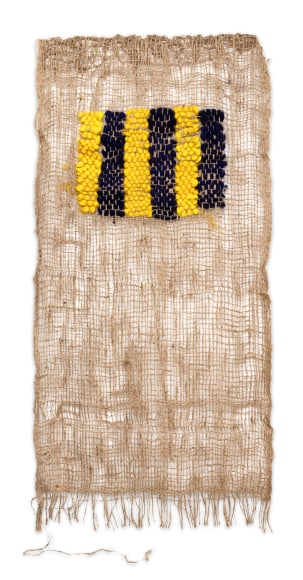(MOSTLY) WOMEN (MOSTLY) ABSTRACT | ERIC FIRESTONE GALLERY | AUGUST 5 – SEPTEMBER 17, 2023
OPENING RECEPTION | AUGUST 5 | 6 – 8 PM
(Mostly) Women (Mostly) Abstract is a two-part exhibition across Eric Firestone Gallery’s East Hampton and New York City locations. A cross-generational group of 22 artists will be included in Part One, opening at the gallery’s 4 Newtown Lane, East Hampton location on August 5. The exhibition suggests aesthetic conversations over time between contemporary artists and represented gallery artists and estates.
ARTISTS: Sally Cook, Uday Dhar, Pam Glick, Tamara Gonzales, Pat Lipsky, Reginald Madison, Keiko Narahashi, Helen O’Leary, Joe Overstreet, Sarah Peters, Judy Pfaff, Pat Passlof. Jeanne Reynal, Toni Ross, Jenny Snider, Sylvia Snowden, Despina Stokou, Huê Thi Hoffmaster, Richard Tinkler, Kennedy Yanko, Nina Yankowitz
AUGUST 5 – SEPTEMBER 17, 2023
ERIC FIRESTONE GALLERY
4 NEWTOWN LANE
EAST HAMPTON, NY
(Mostly) Women (Mostly) Abstract reveals how content is embedded in abstraction. The exhibition showcases artists who have charted a deeply personal path outside the center of the art world and utilized experimental techniques and processes. In broad terms, the exhibition considers the condition of “otherness” as manifest in abstraction, in terms of ethnicity, race, gender, and sexual orientation—reflecting Eric Firestone Gallery’s central mission to examine the ever-expanding canon of Post-War painting and sculpture in New York.
The work of artists Joe Overstreet, Reginald Madison, and Kennedy Yanko disrupts the division between painting and sculpture. Joe Overstreet (1933–2019) was an experimental innovator who used ropes and alternate supports to extend his canvases off the wall. Kennedy Yanko (b. 1988) removes paint entirely from its surface, shaping and folding paint skin to explore the sculptural possibilities of the medium. Reginald Madison (b. 1941), a self-taught artist formed by the Black Arts Movement of the 1960s and ‘70s, moves freely between abstraction and figuration, painting and sculpture, inspired by the duality of improvisation and structure in Jazz music and the visionary sound of Sun Ra.
Several works in the exhibition reflect domesticity, craft, and the decorative. Judy Pfaff (b. 1946), a pioneer of installation art since the 1970s, synthesizes sculpture, painting, and architecture into dynamic environments. Her work incorporates a host of materials, each chosen with careful intentionality. A major work from the late 1980s will be on view. Pfaff has said:
Most of the work I like has a funny kind of storytelling. One’s life is in it: including the cleaning, the cooking, the child-caring. Women are beginning to see that they can talk about themselves. Right now, that is available. It never used to be.
This tendency also manifests itself in the work of Jenny Snider (b. 1944), Tamara Gonzales (b. 1959), Nina Yankowitz (b. 1946), and Toni Ross (b. 1957). Snider credits her involvement with second-wave feminism for expanding her understanding of art to include the handmade arts of daily life: sewing, quilting, folk, and outsider art. Textiles and nature often inspire Tamara Gonzalez’s works. Over the last ten years, Gonzalez traveled to Peru, and her visionary experiences and friendships with the Shipibo people have become a source of both inspiration and collaboration in her work.
Helen O’Leary (b. 1961) creates abstract sculptures out of gathered material. Her work stitches together hundreds of tiny pieces of wood, like sticks found on the land, to form works both monumental, yet also vulnerable and precarious. O’Leary has described her work as reflecting a feminism that speaks to women’s resourcefulness and strength. Sylvia Snowden’s (b. 1942) work of the late 1970s reflects her move to the Shaw neighborhood of Washington D.C. Snowden aimed to portray the people she encountered, many of whom were transient, unemployed, or unhoused, with individual grace and dignity. Figures seem to claw at the energetic abstractions that surround them, suggesting resilience in the face of adversity.
Sculptures by Keiko Narahashi (b. 1959) and Sarah Peters (b. 1971) will also be on view. A group of Narahashi’s glazed ceramic work is displayed alongside a bronze head by Sarah Peters. Peters’s work is disquieting in its melding of disparate sources: from antiquity to futuristic androids, all bound together by stylized abstraction, like the waves of cascading hair.
Uday Dhar depicts abstracted flowers, which he describes as a metaphor for multiculturalism and gender fluidity. Because flowers have both male and female reproductive capacities and can be pollinated in a variety of ways, he sees them as emblematic of hybridity and related to his experience as an American artist of Indian descent. Similar concerns inflect the abstracted flowers of Vietnamese American painter Huê Thi Hoffmaster (b. 1982). Hoffmaster’s clustered lines also suggest calligraphic writing. Despina Stokou (b. 1978) combines text and dense layers of brushwork. She removes words from personal and political narratives, which then become layered on her canvases.
Other work in the exhibition employs a softening and loosening of the grid and compositional structures that defined—and limited—modernist painting. This is visible in the stain paintings of Pat Lipsky (b. 1941), the unruly and playful grids of Pam Glick (b. 1956), and the improvisational webs of Richard Tinkler (b. 1975).
This exhibition also showcases several mid-century women abstractionists, including Pat Passlof (1928–2011), mosaicist Jeanne Reynal (1903–83), and an early Abstract Expressionist painting by Sally Cook (b. 1932).

